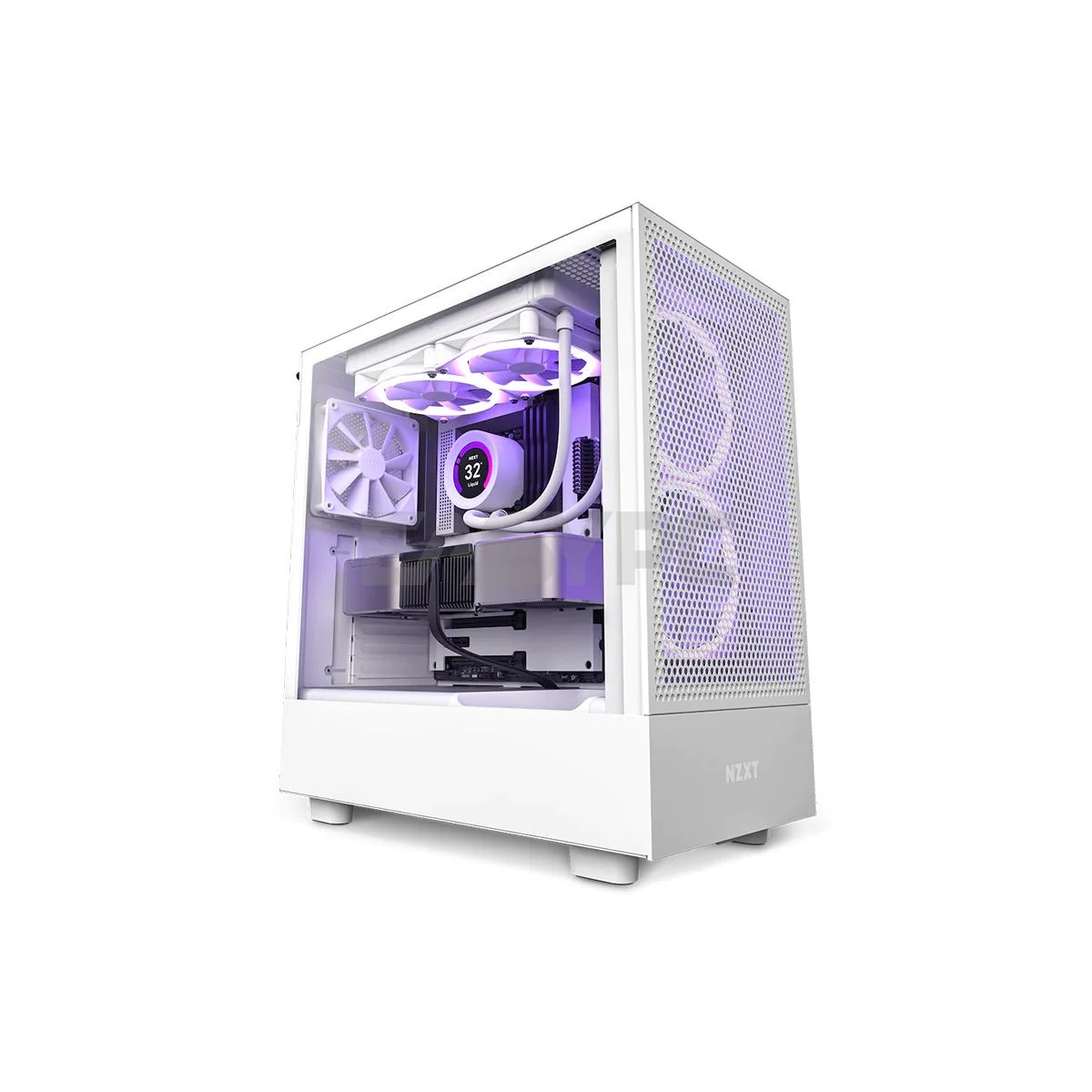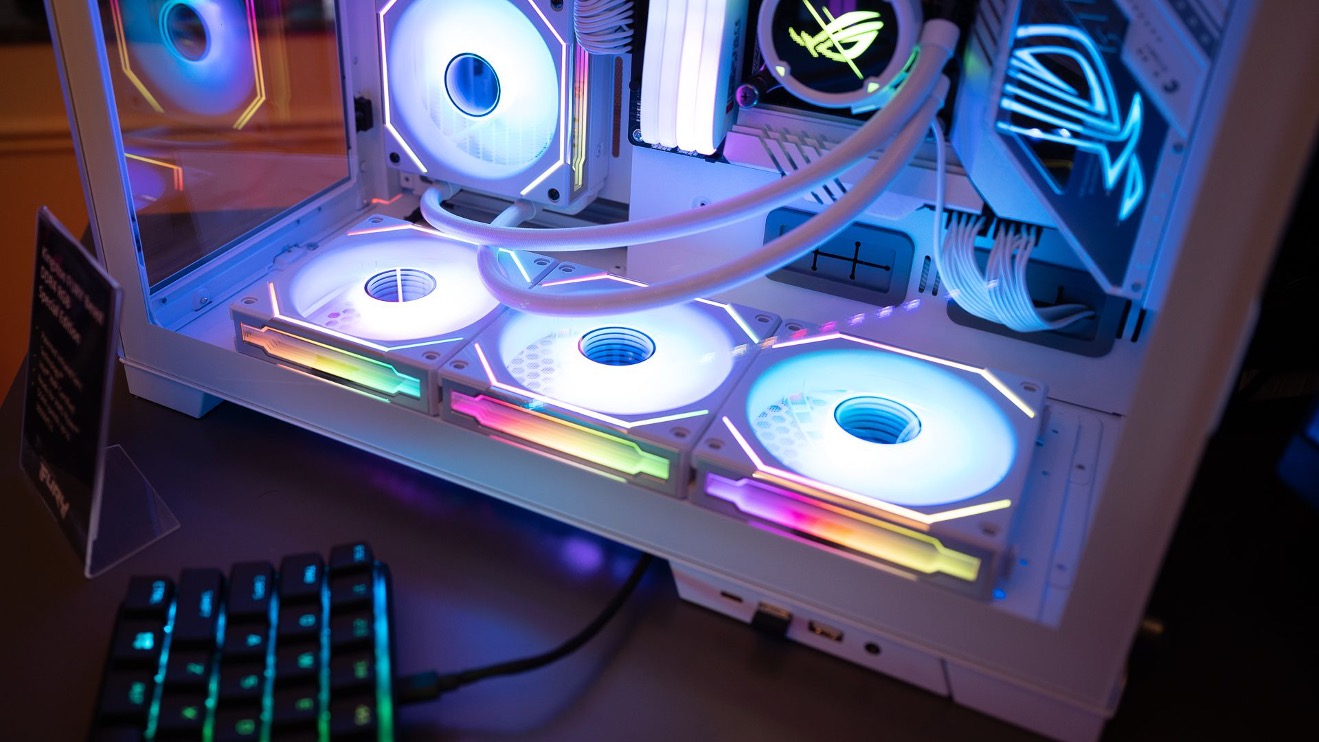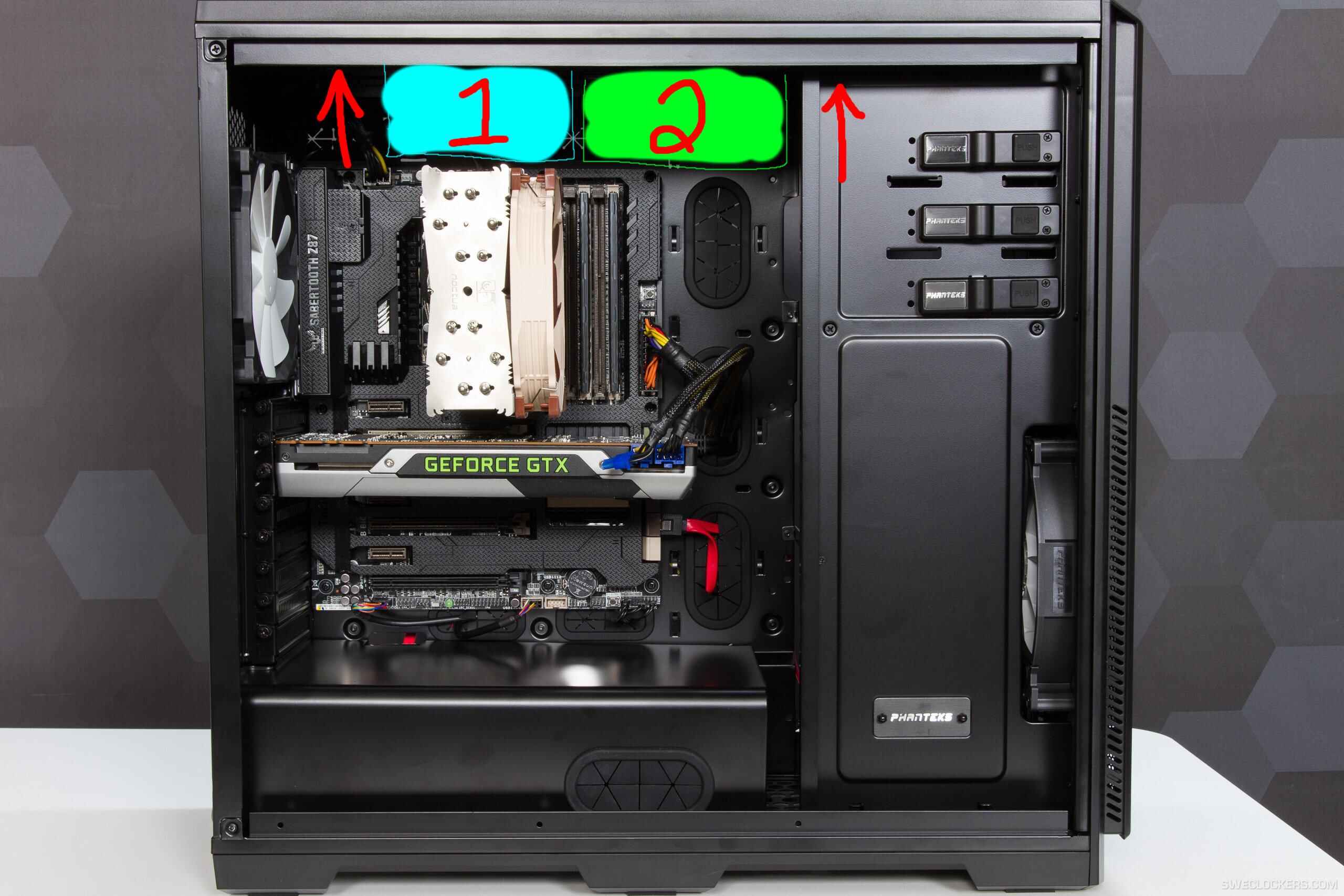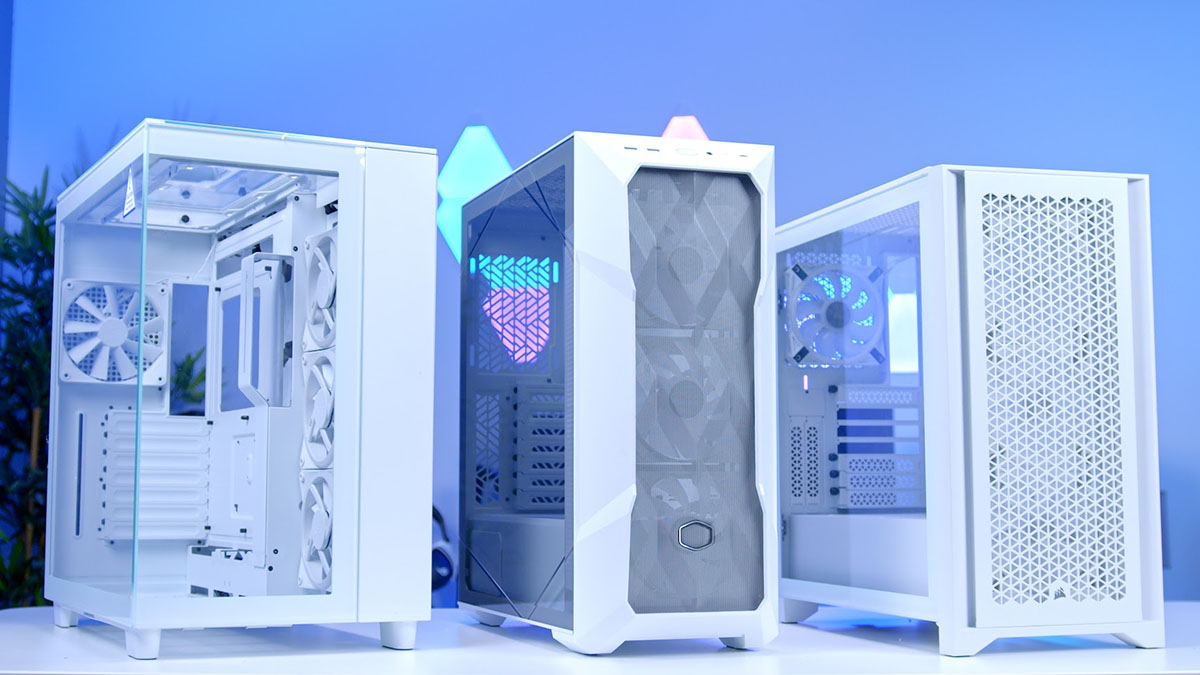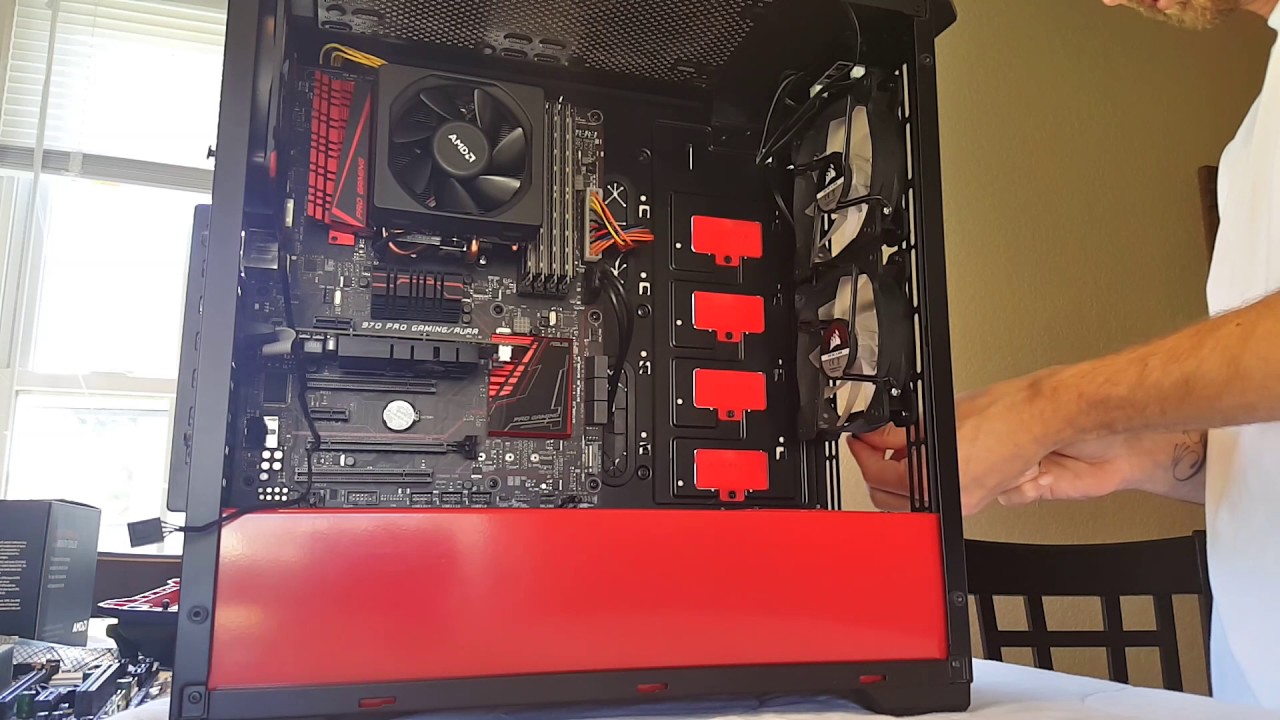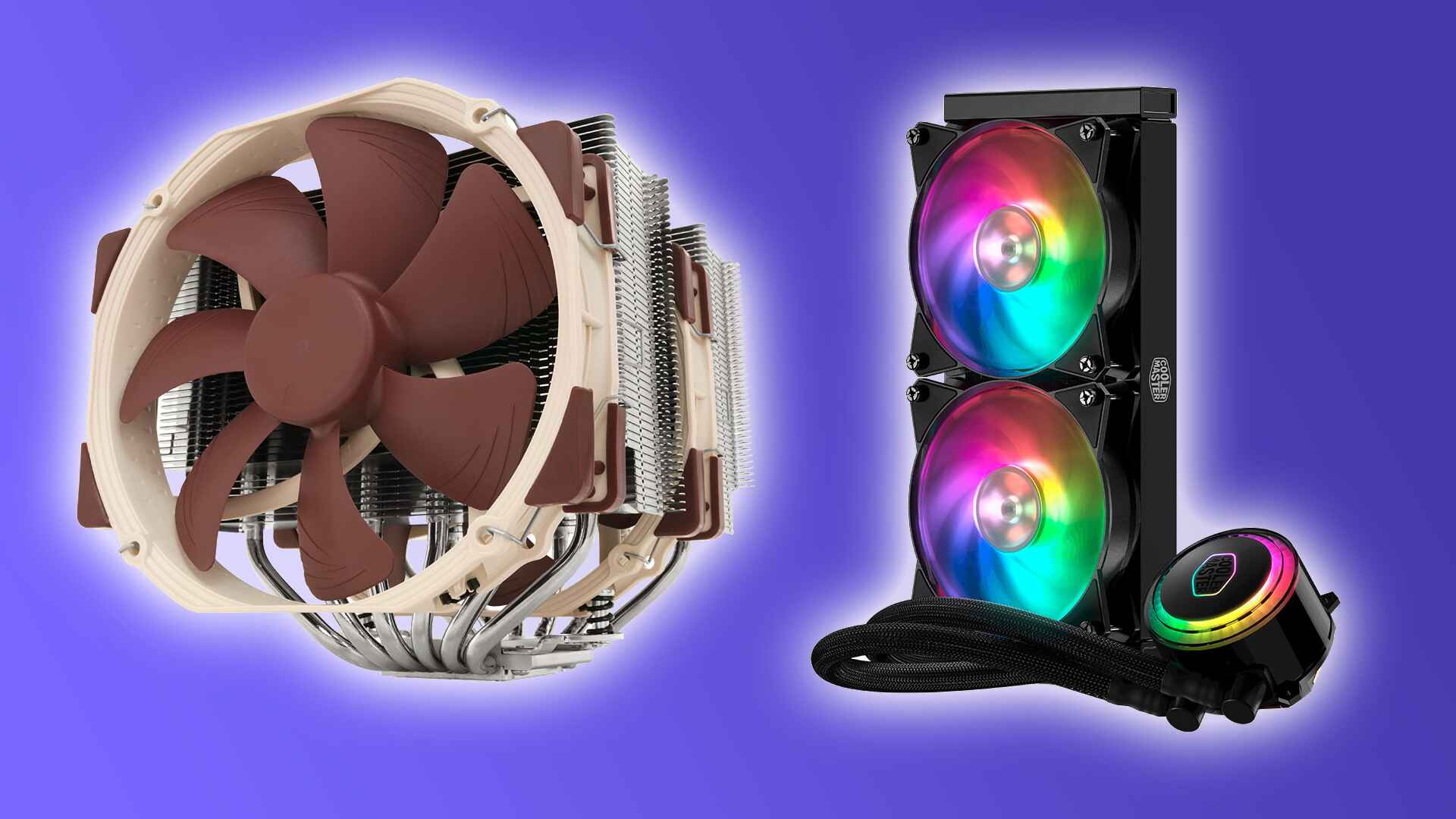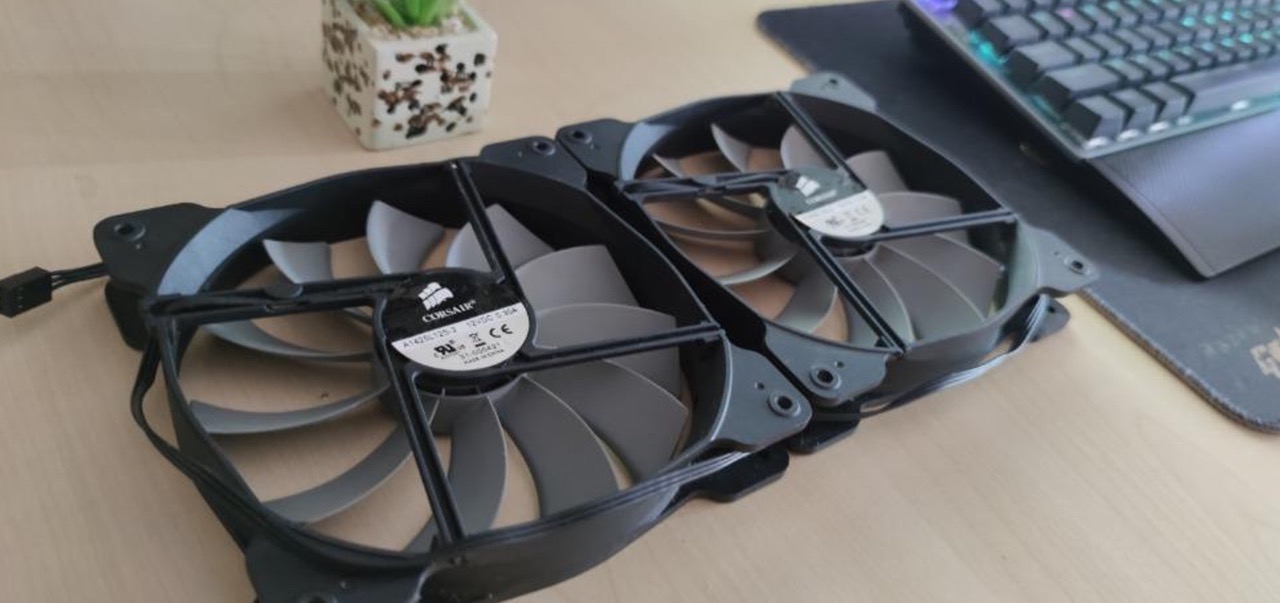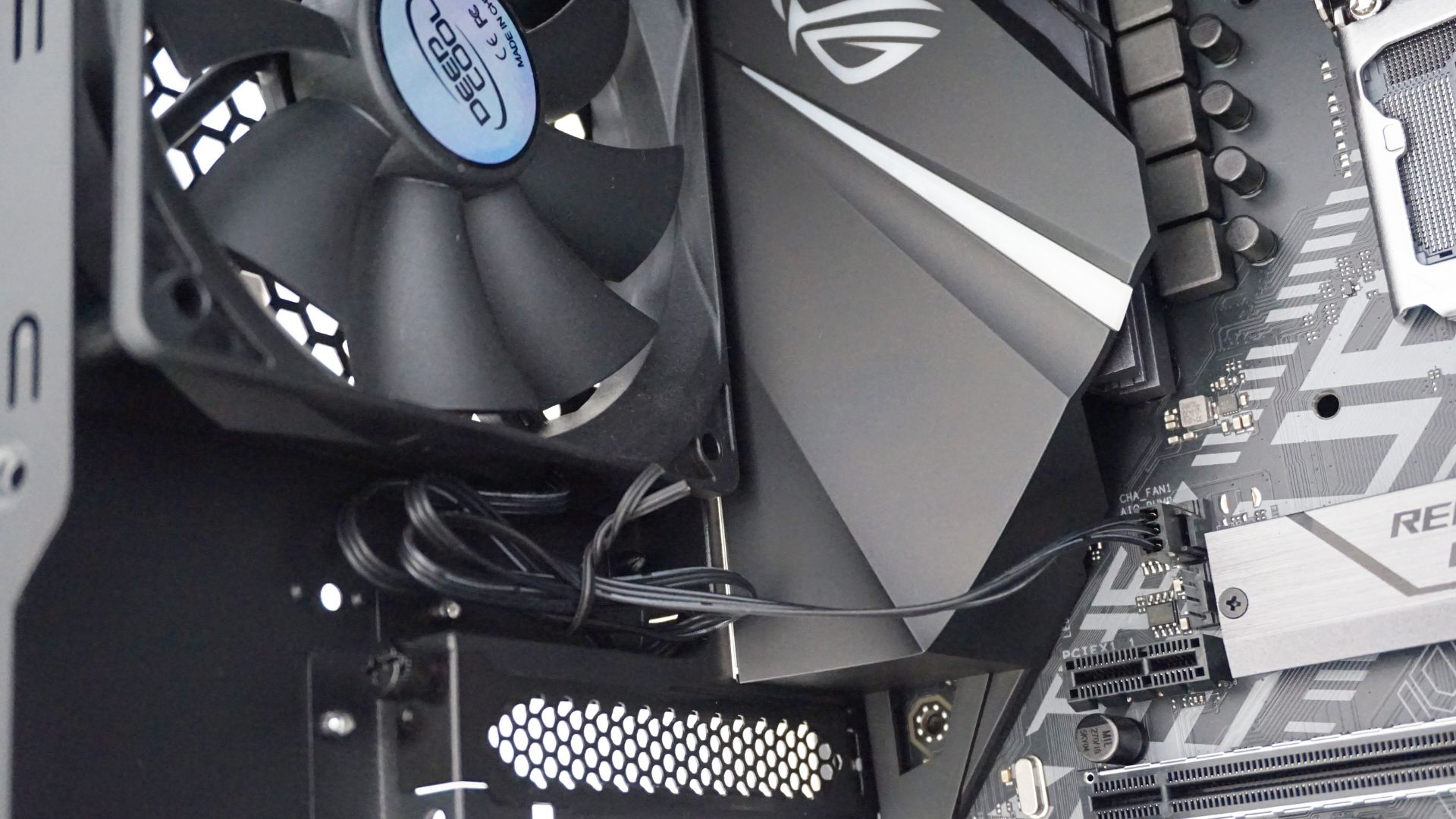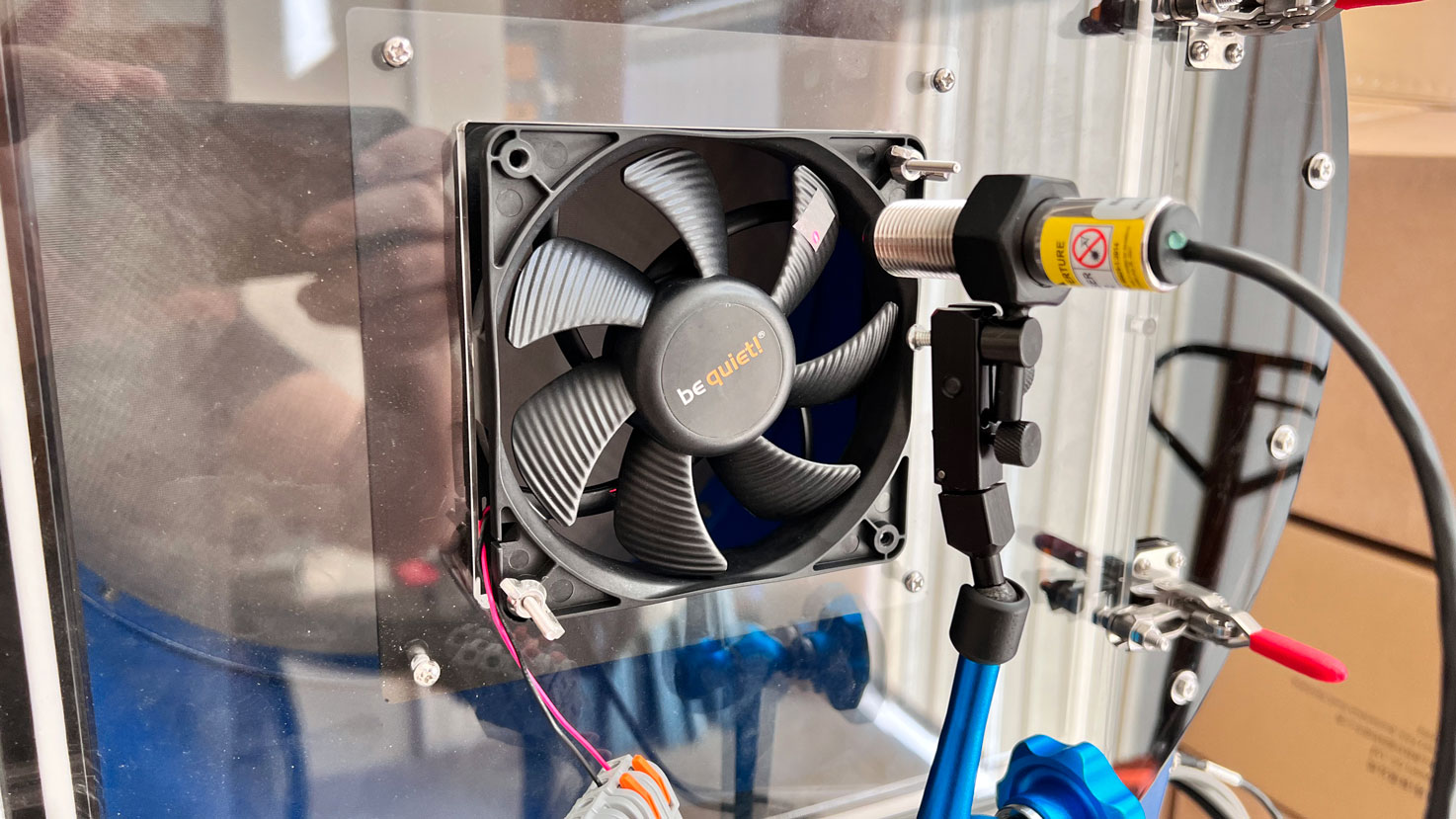Introduction
When it comes to building a high-performance PC, optimizing airflow within the case is often overlooked but can make a significant difference in both the cooling and overall performance of your system. Proper PC case airflow ensures that components, such as the CPU, GPU, and motherboard, stay within optimal temperature ranges, preventing thermal throttling and increasing the longevity of your hardware.
Good airflow is essential for dissipating heat generated by the components and maintaining a consistent temperature throughout the case. This is achieved by efficiently circulating cool air in and expelling hot air out of the PC case. Without proper airflow, hot spots can develop, leading to poor performance, system instability, and even hardware failure.
In this article, we will explore the importance of PC case airflow and how understanding it can help you optimize your system’s cooling capabilities. We will also discuss the different components of PC case airflow, the types of airflow configurations, and how to analyze and optimize your PC case airflow for optimal performance.
Whether you are a casual PC user, a gamer, or a content creator, maximizing the airflow within your PC case is vital for maintaining stable performance and protecting your valuable investment. By understanding the principles of PC case airflow, you can ensure that your system operates efficiently and reliably, even under heavy loads.
Why is PC Case Airflow Important?
Proper airflow inside a PC case is crucial for several reasons. The primary goal is to keep the internal components cool and prevent them from overheating. Here’s why PC case airflow is essential:
- Temperature Regulation: Effective airflow helps dissipate heat generated by the components, maintaining lower temperatures throughout the case. Excess heat can lead to performance degradation, system instability, and even permanent damage to the hardware.
- Preventing Thermal Throttling: When components, such as the CPU or GPU, reach high temperatures, they may throttle down their performance to prevent further overheating. This can significantly impact the performance and speed of your PC. With good airflow, you can mitigate the risk of thermal throttling and ensure sustained performance.
- Hardware Longevity: Overheating can reduce the lifespan of your PC components. Excessive heat can cause stress on sensitive parts, leading to premature wear and potential failure. Maintaining a well-ventilated case with proper airflow helps extend the lifespan of your hardware investment.
- Dust Control: Dust is a common enemy of computer systems, as it accumulates over time and clogs fans, vents, and heatsinks. Proper airflow can help reduce the amount of dust buildup within the case, minimizing the need for frequent cleaning and avoiding potential damage caused by dust-related issues.
- Noise Reduction: Inefficient airflow can result in increased fan speeds, leading to louder operation and a noisier PC. By improving airflow, you can optimize fan speeds and reduce overall noise levels, creating a more pleasant and quieter computing experience.
By understanding the importance of PC case airflow, you can take proactive measures to ensure proper cooling, extend the lifespan of your components, and optimize the overall performance of your system. In the next sections, we will explore the various components of PC case airflow and discuss how to analyze and optimize airflow configurations for optimal cooling.
Components of PC Case Airflow
Understanding the different components of PC case airflow is essential for implementing an effective cooling solution. Here are the key components involved:
- Intake Fans: These fans are responsible for pulling cool air from outside the case into the interior. Intake fans are typically located at the front or bottom of the case and should be unobstructed to allow a steady flow of fresh air.
- Exhaust Fans: Exhaust fans expel hot air from the case, creating airflow through the system. These fans are usually located at the rear and top of the case, pushing hot air out and maintaining a constant circulation of air.
- CPU Cooler: The CPU cooler plays a crucial role in dissipating heat generated by the processor. It consists of a heatsink and a fan or liquid cooling system. Proper airflow around the CPU cooler is necessary for efficient heat transfer and cooling.
- GPU Cooler: Similar to the CPU cooler, the GPU cooler is responsible for cooling the graphics card. It typically consists of fans and a heatsink. Adequate airflow around the GPU is vital to prevent overheating, especially during intense gaming or GPU-intensive tasks.
- Case Vents and Grills: Vents and grills are openings in the case that allow airflow in and out. Proper placement and size of these vents are crucial for maximizing airflow. They should be free from obstructions, such as cables or components, to ensure optimal air circulation.
- Cable Management: Proper cable management helps improve airflow by reducing clutter and blocking airflow pathways. Neatly organizing cables and placing them away from fans and airflow pathways promotes better airflow throughout the case.
Each component plays a vital role in maintaining a well-ventilated PC case. Understanding how these components interact allows you to optimize your system’s airflow configuration for optimal cooling and performance. In the following sections, we will explore the different types of PC case airflow configurations and how to analyze and optimize them.
Types of PC Case Airflow
When it comes to PC case airflow, there are several common configurations to consider. Each configuration has its own advantages and disadvantages, so let’s explore some of the most popular types:
- Positive Pressure: This airflow configuration aims to create higher air pressure inside the case than outside, by having more intake fans than exhaust fans. The excess air pressure forces the hot air to vent out through any available openings, such as vents and gaps. Positive pressure helps keep dust out of the case as the incoming air is filtered, but it can lead to slightly higher internal temperatures if not managed properly.
- Negative Pressure: Contrastingly, negative pressure involves having more exhaust fans than intake fans, resulting in lower air pressure inside the case than outside. This configuration allows for efficient heat removal but increases the risk of dust accumulation as the case draws in air from any available openings. Regular cleaning and dust management are imperative for maintaining good airflow and cooling efficiency in a negative pressure setup.
- Neutral Pressure: In a neutral pressure configuration, the number of intake and exhaust fans is balanced, resulting in equal air pressure inside and outside the case. This setup aims to strike a balance between efficient cooling and dust management. It provides adequate airflow while minimizing the risk of dust accumulation within the case.
- Hybrid Pressure: A hybrid pressure configuration combines elements of both positive and negative pressure by strategically placing more intake fans in certain areas of the case and more exhaust fans in others. This configuration is often employed in systems with multiple radiators or high-performance components, and it offers a customized approach to airflow management.
- Directed Airflow: Directed airflow focuses on channeling the air to specific components, such as the CPU and GPU, with the use of shrouds, ducts, and innovative case designs. This type of airflow configuration ensures that the critical components receive optimal cooling while minimizing the impact on other areas of the case.
Choosing the right type of PC case airflow configuration depends on factors such as your specific hardware, case design, and environmental conditions. Experimentation and monitoring are essential to find the optimal airflow configuration that suits your needs. In the next section, we will discuss how to analyze and optimize your PC case airflow to maximize cooling efficiency.
How to Analyze PC Case Airflow
Analyzing your PC case airflow is an important step in optimizing cooling efficiency. Here are some essential steps to follow:
- Visual Inspection: Start by visually inspecting your PC case. Look for blockages, obstructions, or any components that may impede airflow. Ensure that vents and grills are clear of dust, and check for any tangled cables that may restrict the airflow.
- Temperature Monitoring: Use software utilities or hardware sensors to monitor the temperature of your components. Pay attention to CPU and GPU temperatures, as well as overall ambient temperature inside the case. High temperatures or significant temperature disparities between components can indicate inefficient airflow.
- Smoke Test: A smoke test involves introducing a small amount of smoke into the case while the system is running. Observe how the smoke moves and disperses throughout the case. Ideally, the smoke should follow a smooth, consistent path from the intake fans to the exhaust fans, indicating good airflow. If the smoke stagnates or dissipates unevenly, it may signify areas of poor airflow.
- Fan Direction Checking: Make sure that all fans are correctly oriented for optimal airflow. Intake fans should draw air into the case, while exhaust fans should expel hot air out of the case. Reversing fan direction can severely impact cooling efficiency.
- Thermal Imaging: If available, use a thermal imaging camera to identify hotspots or areas of inadequate cooling. Thermal images can provide a visual representation of temperature distribution and airflow patterns, allowing you to pinpoint specific areas that require attention.
By thoroughly analyzing your PC case airflow, you can identify any issues or bottlenecks that may be hindering cooling efficiency. Once you have a clear understanding of your system’s airflow characteristics, you can move on to optimizing your PC case airflow, which we will discuss in the next section.
Assessing Fan Placement and Direction
The placement and direction of fans in your PC case play a critical role in optimizing airflow and cooling performance. Here’s how to assess and optimize fan placement and direction:
- Identify Intake and Exhaust Points: Determine the available fan mounting locations in your case. Typically, there are intake positions at the front, bottom, or side, and exhaust positions at the rear or top. See if your case has any additional mounting points, such as the side panel or the bottom of the chassis.
- Create a Balanced Airflow: Aim to achieve a balanced distribution of intake and exhaust fans. Having an equal number of intake and exhaust fans can help maintain a consistent airflow throughout the case.
- Front-to-Back or Bottom-to-Top Flow: Plan the direction of airflow, either from the front to the back or from the bottom to the top of the case. This creates a natural path for cool air to enter at the front or bottom and hot air to exit at the back or top, promoting efficient heat dissipation.
- Consider Positive or Negative Pressure: Determine whether you want to create positive pressure or negative pressure within the case. Positive pressure involves having more intake fans than exhaust fans, while negative pressure has more exhaust fans than intake fans. Choose the configuration that suits your needs, considering factors like dust control and cooling performance.
- Optimize Fan Positions: Experiment with different fan placement configurations to ensure optimal cooling. Consider placing intake fans near components that generate a lot of heat, such as the CPU and GPU, for direct cooling. Position exhaust fans strategically to efficiently dissipate hot air from the case.
- Utilize Fan Filters: Install fan filters on intake fans to prevent dust from entering the case. This helps reduce the risk of dust accumulation on internal components and ensures smoother airflow. Regularly clean and maintain these filters to maintain optimal cooling performance.
- Manage Cable Clutter: Proper cable management not only improves aesthetics but also aids in airflow. Route cables away from fans and airflow pathways to prevent obstruction. Use cable ties or cable management solutions to keep cables organized and tidy.
Assessing fan placement and direction is a crucial step in optimizing PC case airflow. By strategically positioning fans and directing airflow, you can maximize cooling efficiency and maintain low component temperatures. In the next section, we will explore various techniques and tips for optimizing PC case airflow to enhance overall performance.
Optimizing PC Case Airflow
To achieve the best possible cooling and performance for your PC, it’s important to optimize your case airflow. Here are some techniques and tips to help you optimize PC case airflow:
- Ensure Proper Fan Configuration: Make sure you have a balanced combination of intake and exhaust fans. Consider the airflow direction and position the fans accordingly to facilitate the smooth flow of air through the case.
- Use High-Quality Fans: Invest in high-quality fans that offer good airflow and static pressure. High-quality fans can move air more efficiently and provide better cooling performance.
- Manage Cable Routing: Keep cables organized and away from airflow pathways. Use cable ties, clips, or a case with built-in cable management features to minimize clutter and obstructions to airflow.
- Opt for Modular Power Supplies: Modular power supplies allow you to connect only the necessary cables, reducing the cable clutter and improving airflow inside the case.
- Consider Fan Speeds: Adjust fan speeds based on the temperature, workload, and noise preferences. Custom fan profiles or fan control software can help optimize the balance between cooling performance and noise levels.
- Utilize Water Cooling: Consider water cooling options, such as all-in-one (AIO) liquid coolers or custom water cooling loops, to efficiently cool your CPU and GPU. Water cooling can help maintain lower temperatures and reduce the strain on airflow within the case.
- Monitor and Manage CPU and GPU Temperatures: Regularly monitor and manage the temperatures of your CPU and GPU. If temperatures are consistently high, consider upgrading your cooling solutions or adjusting fan speeds to ensure optimal cooling performance.
- Regularly Clean and Maintain: Dust accumulation can hinder airflow and cooling efficiency. Regularly clean your PC case, fans, and filters to keep them free from dust and debris. This will help maintain optimal airflow and prevent hardware damage caused by overheating.
- Consider Case Modifications: In some cases, modifying the case can improve airflow. This may include adding additional fan mounts, cutting vents, or using specialty airflow accessories like shrouds or ducts to guide airflow to specific components.
By implementing these optimization techniques, you can maximize cooling performance, reduce component temperatures, and ensure the longevity of your PC. However, keep in mind that each case and system configuration is unique, so it may require some experimentation and monitoring to find the ideal combination of optimizations for your specific setup.
Troubleshooting PC Case Airflow Issues
Even with proper planning and optimization, PC case airflow issues may still arise. Here are some common airflow problems and how to troubleshoot them:
- High Component Temperatures: If you notice excessively high temperatures in your CPU or GPU, check for obstructions or blockages in your case. Ensure that all fans are functioning correctly and that the airflow path is clear. Consider upgrading cooling solutions, such as adding more fans or switching to a more efficient CPU cooler or GPU cooler.
- Noisy Fans: If your fans are producing excessive noise, it could indicate that they are running at high speeds to compensate for inadequate airflow. Ensure proper fan placement and direction to facilitate better cooling. Consider using quieter fans or adjusting fan speeds through software control or BIOS settings.
- Dust Accumulation: If your case accumulates dust quickly, it can hinder airflow and cooling performance. Make sure to clean your case, fans, and filters regularly. Consider using filters on intake fans to prevent dust buildup. If necessary, increase the frequency of cleaning or consider using compressed air for more thorough dust removal.
- Hotspots or Uneven Cooling: If certain areas of your case experience higher temperatures than others, it may indicate poor airflow. Check for blockages around the affected components and ensure that there is adequate ventilation. Consider adjusting fan placement or adding additional fans to improve airflow to those areas.
- Ineffective Positive or Negative Pressure: If you’ve chosen a positive or negative pressure configuration but are not seeing the desired effects, check that your intake and exhaust fan ratios are correct. Adjust the number of intake and exhaust fans accordingly to achieve the desired pressure balance.
- Insufficient Cable Management: Poor cable management can obstruct airflow and hinder cooling efficiency. Check for cable clutter or tangled cables that are obstructing the path of airflow. Reorganize and secure your cables using cable ties or cable management solutions to improve airflow within the case.
- External Obstructions: Sometimes, external factors can impact PC case airflow. Ensure that your case is not placed in an enclosed area or near heat sources. Avoid placing the case on surfaces that can impede the bottom ventilation. Allow for clear space around the case to facilitate better airflow.
If you encounter any of these airflow issues, carefully analyze the problem and take the necessary steps to troubleshoot and resolve them. By identifying and addressing these issues, you can optimize the airflow in your PC case and ensure consistent cooling performance.
Conclusion
Understanding and optimizing PC case airflow is crucial for maintaining optimal cooling performance and the longevity of your components. By implementing proper airflow management, you can ensure lower temperatures, prevent thermal throttling, and extend the lifespan of your hardware.
This article explored the importance of PC case airflow and discussed the components involved in maintaining efficient cooling. We also discussed different types of airflow configurations, such as positive and negative pressure, and the importance of fan placement and direction.
Furthermore, we provided techniques for analyzing and troubleshooting airflow issues that may arise, including high component temperatures, noise, dust accumulation, and uneven cooling. By addressing these problems, you can optimize your PC case airflow and improve overall system performance.
Remember to regularly monitor and clean your PC case, fans, and filters to prevent dust buildup and ensure efficient airflow. Experiment with fan placement, direction, and fan speeds to find the optimal configuration for your specific needs and hardware.
By taking the time to analyze and optimize your PC case airflow, you can create a cooler and quieter system that performs at its best. A well-ventilated PC case not only enhances stability and performance but also provides a more enjoyable computing experience.
So, whether you are a casual user or a dedicated gamer, paying attention to PC case airflow is an essential aspect of building and maintaining a high-performance system. Make the most of your hardware investment by ensuring optimal cooling and maximizing the lifespan of your components.







